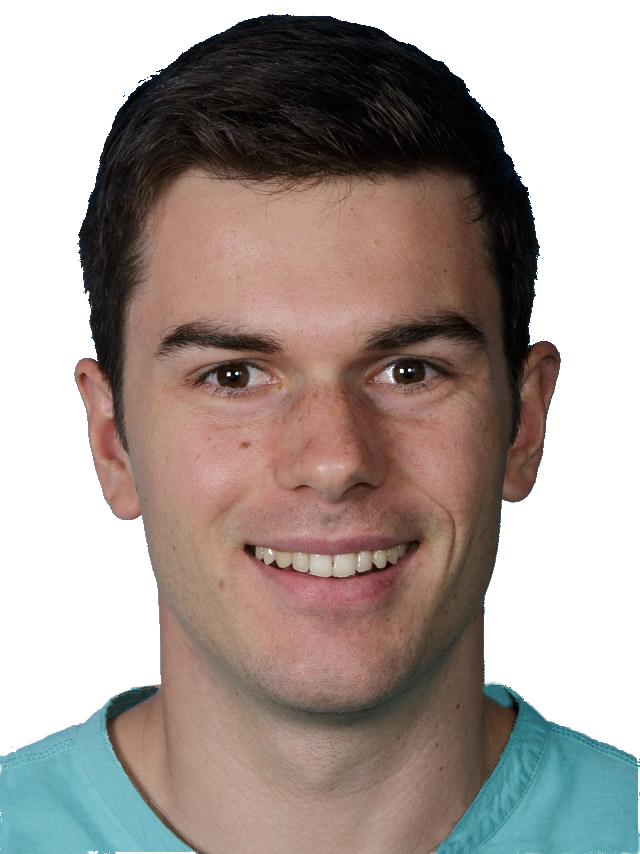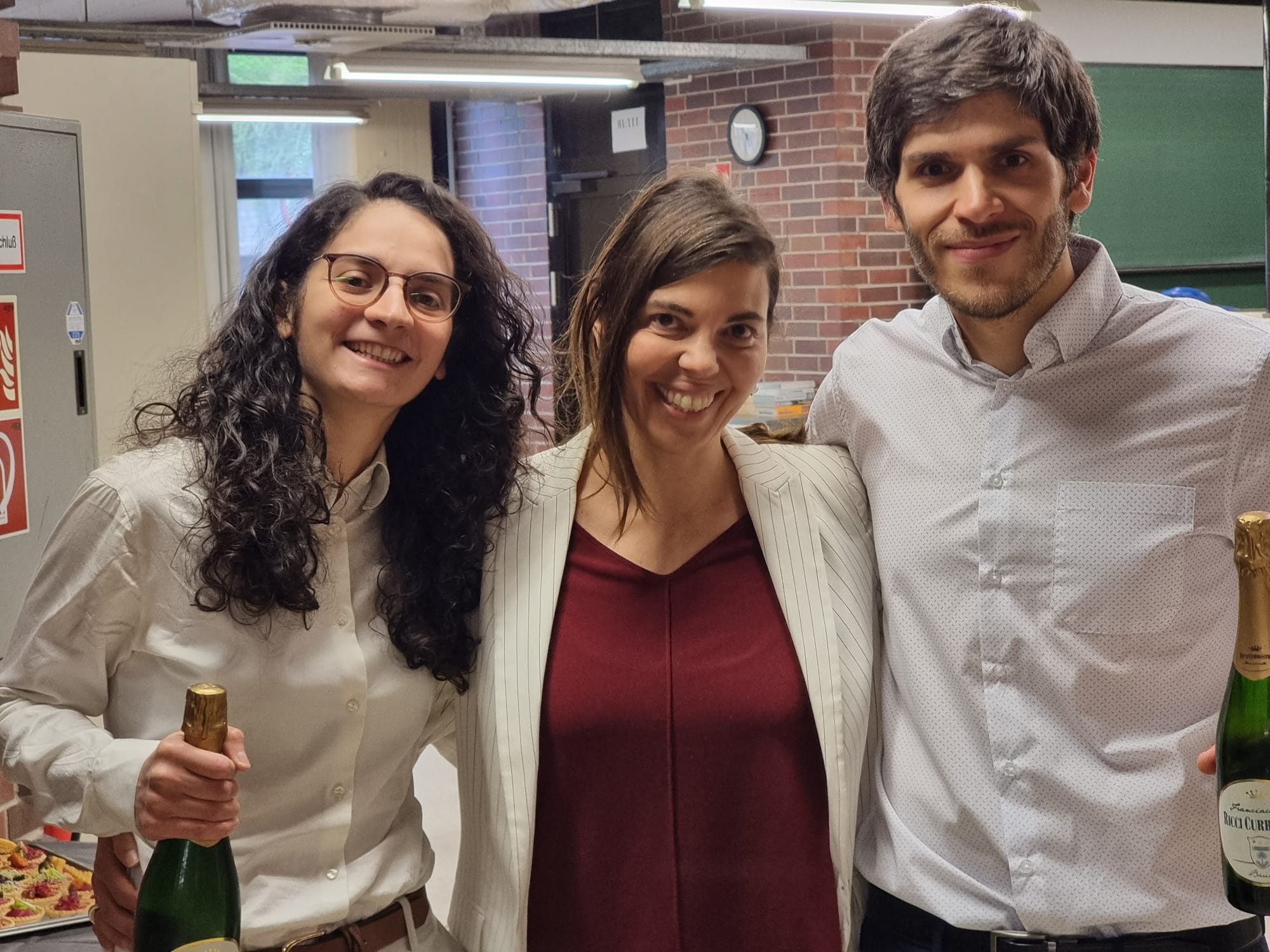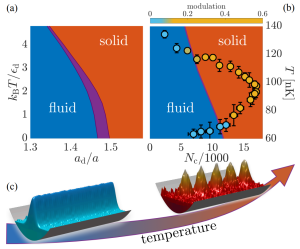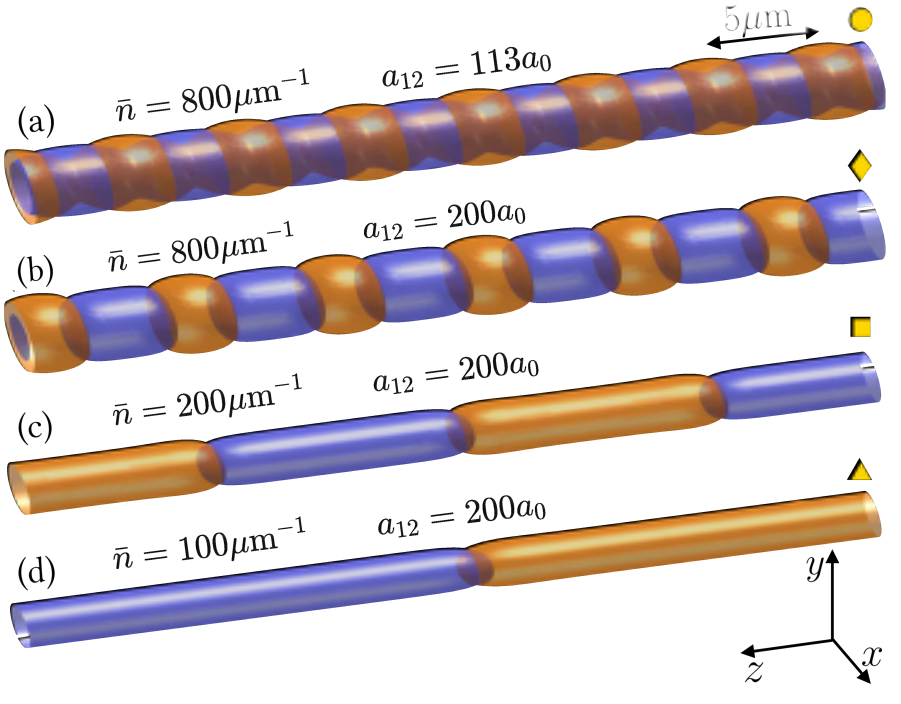Alex Patscheider, who finished his PhD with us last year, just received one of this year’s Hypo Tirol Prizes for his dissertation on controlling and understanding of dipolar quantum gases of erbium atoms. Congratulations! 👏
Currently, Alex works as a Quantum Network Engineer at the Canada-based quantum technology company Photonic Inc.
 Thomas Bland
Thomas Bland
Heating a liquid into a… solid?!
Raising the temperature of a material enhances the thermal motion of particles. Such an increase in thermal energy commonly leads to the melting of a solid into a fluid and eventually vaporises the liquid into a gaseous phase of matter. Here, together with theorists from Aarhus, Denmark, we study the finite-temperature physics of dipolar quantum fluids and find surprising deviations from this general phenomenology. In particular, we describe how heating a dipolar superfluid from near-zero temperatures can induce a phase transition to a supersolid state with a broken translational symmetry. The predicted effect agrees with our experimental measurements from the Er-Dy, which opens the door for exploring the unusual thermodynamics of dipolar quantum fluids.
See the pre-print here: arXiv:2209.00335 and the published paper here: Nature Communications (2023)
Austrian Quantum Simulator Infrastructure granted
In the Framework of the Quantum Austria Initiative a joint project from the University of Innsbruck and the TU Wien was awarded and starts at the beginning of 2023. The “Austrian Quantum Simulator Infrastructure” project with a total funding of about 3 Million Euros will greatly enhance the already existing quantum simulators in several labs in Innsbruck and Vienna and also help in the building up of new simulators. Quantum simulators are a very powerful tool to study complex quantum systems by mimicking their behaviour with a quantum system which is fully controllable. The project consortium combines a great variety of physical systems which are used as simulators, including solid-state systems, ultracold atoms and trapped ions. Our group is participating with our long-range interacting atoms inside an optical lattice and our Rydberg tweezer array experiment.
Anti-dipolar supersolids are anti-boring!
By rapidly rotating the dipole moment in an ultracold Bose gas it is possible to tune the dipole-dipole interaction. Rotating dipoles around the origin of the x-y plane, for example, gives a time averaged interaction that is equivalent to anti-dipoles oriented along the z axis! This means that the effective interaction is opposite: head-to-tail anti-dipoles repel, and side-by-side anti-dipoles attract! In an infinite tube of anti-dipoles, this means that the possible supersolid states have cylindrical symmetry around the x-y axis, which we utilize to facilitate analytic predictions, and faster numerical simulations, of two-component antidipolar supersolids!
See the pre-print here: arXiv:2301.08007
Review of recent experiments with dipolar gases
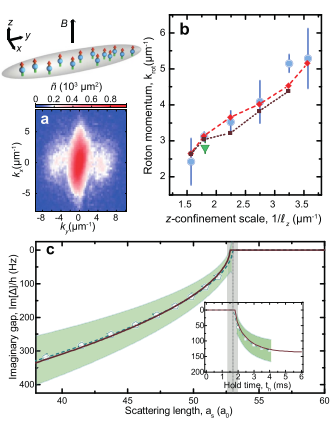 The last 15 years has seen tremendous experimental progress for the manipulation and control of ultracold atoms with sizeable dipole-dipole interactions. In this review, together with other group leaders who first condensed dysprosium and chromium, we review the discoveries made so far, and lay out the future perspectives for this exciting field!
The last 15 years has seen tremendous experimental progress for the manipulation and control of ultracold atoms with sizeable dipole-dipole interactions. In this review, together with other group leaders who first condensed dysprosium and chromium, we review the discoveries made so far, and lay out the future perspectives for this exciting field!
The paper can be found here: Dipolar physics: a review of experiments with magnetic quantum gases – IOPscience

